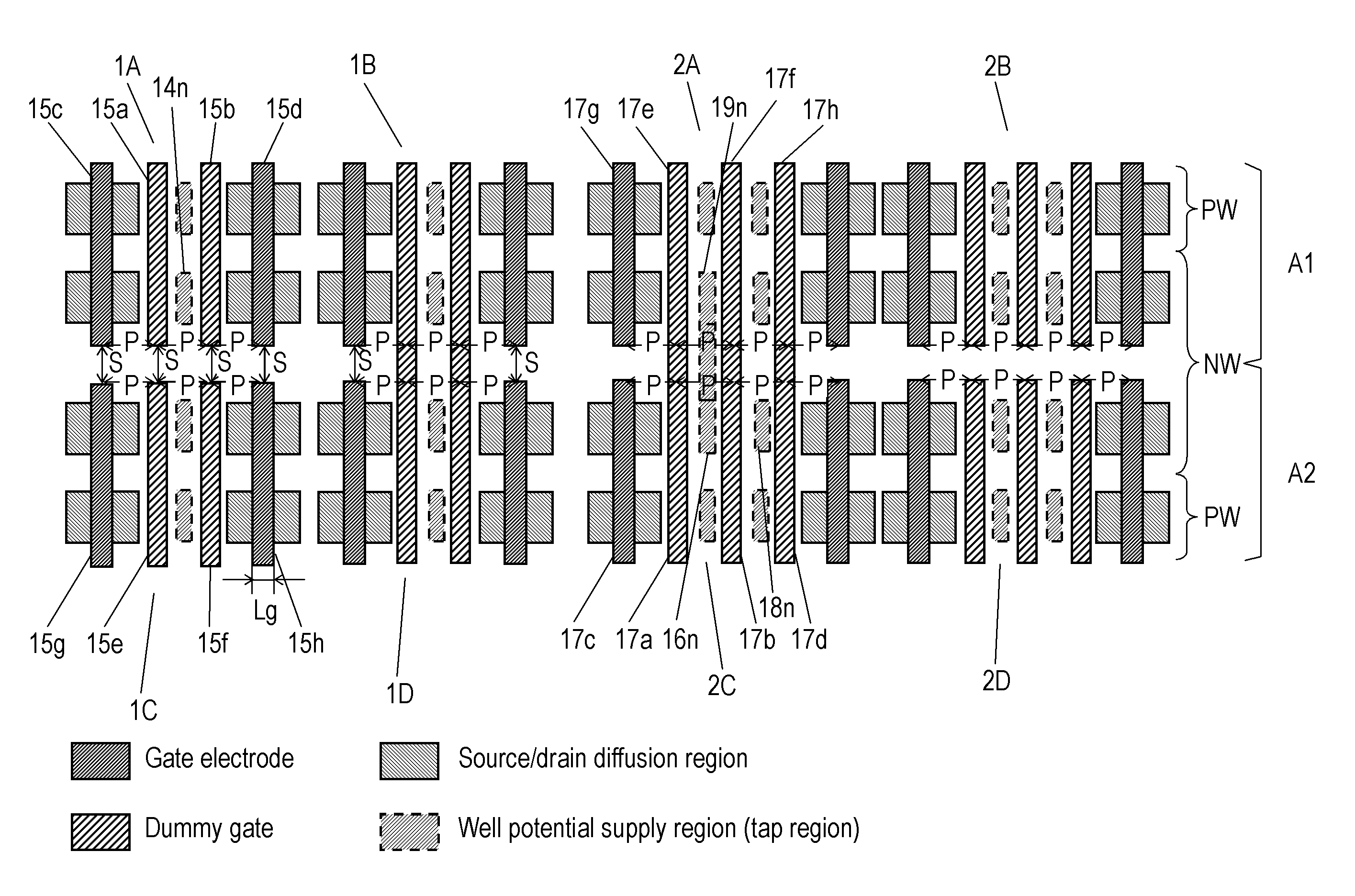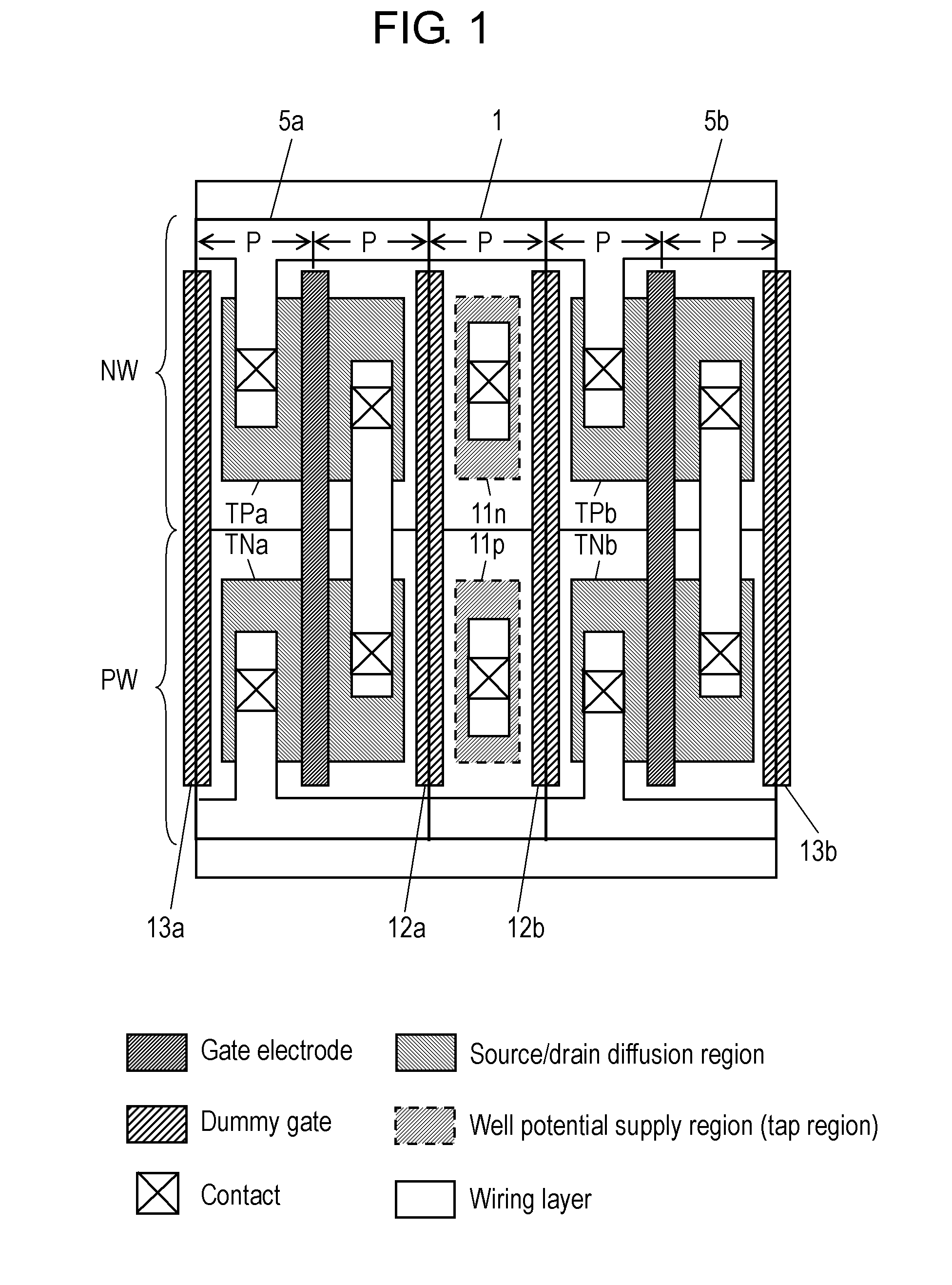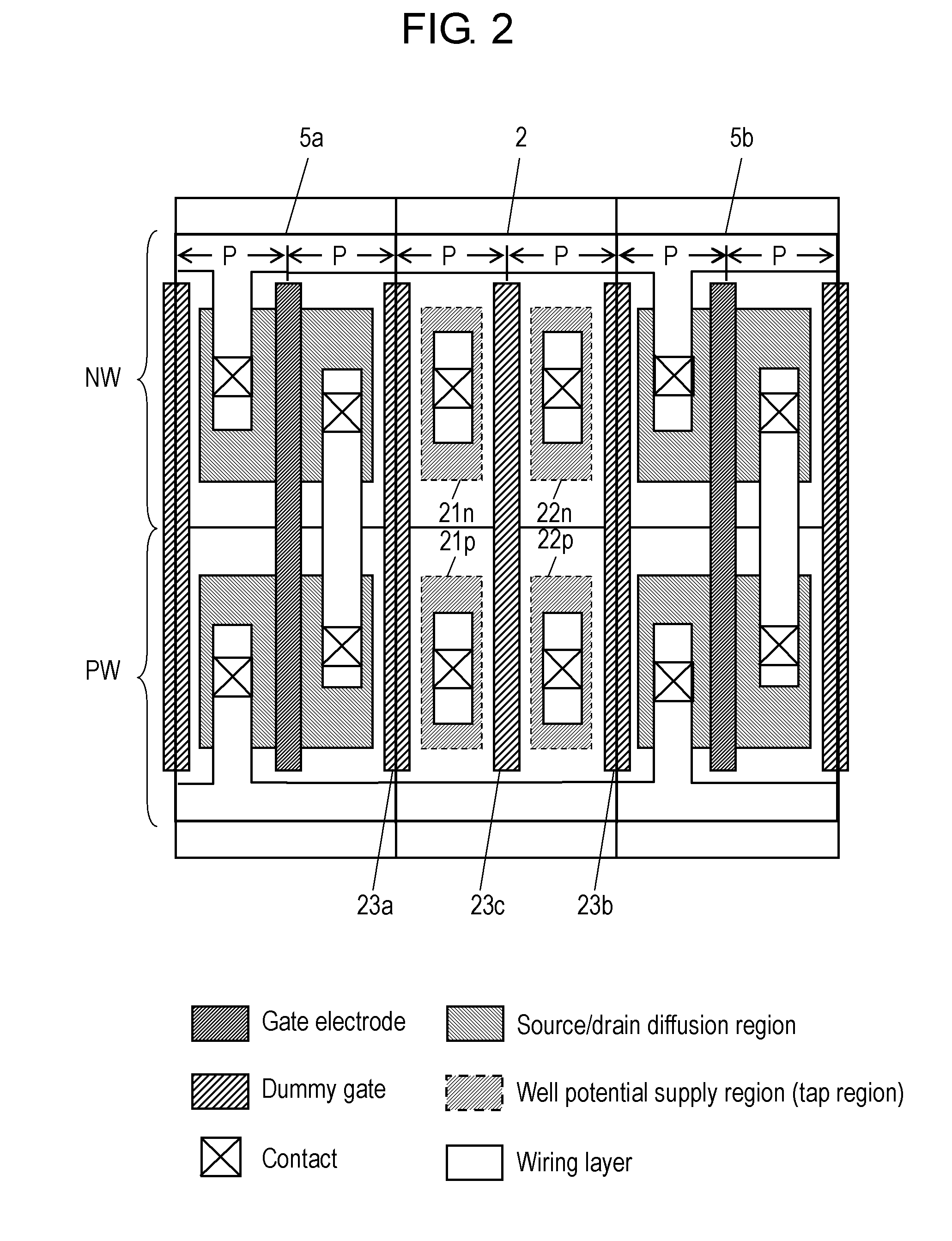Semiconductor device
a semiconductor device and semiconductor technology, applied in the direction of semiconductor devices, electrical devices, transistors, etc., can solve the problems of inability to maintain regular gate shape, increase in the layout area of the semiconductor device, uneven gate length, etc., to achieve reliably suppress uneven gate length and increase the layout area
- Summary
- Abstract
- Description
- Claims
- Application Information
AI Technical Summary
Benefits of technology
Problems solved by technology
Method used
Image
Examples
first exemplary embodiment
[0034]FIG. 1 is a drawing showing an example of the layout structure of a tap cell according to a first exemplary embodiment. Herein, a “tap cell” refers to a cell having a potential supply region to a well. In the layout structure of FIG. 1, tap cell 1 is closely disposed between logic cells 5a and 5b constituting an inverter.
[0035]In FIG. 1, tap cell 1 includes N-type impurity diffusion region 11n formed in N-type well region NW and P-type impurity diffusion region 11p formed in P-type well region PW. Desired well potential is supplied from N-type impurity diffusion region 11n to N-type well region NW via contacts and wiring. Desired well potential is supplied from P-type impurity diffusion region 11p to P-type well region PW via the contacts and wiring. In other words, N-type impurity diffusion region 11n and P-type impurity diffusion region 11p constitute a well potential supply region (TAP region).
[0036]Logic cells 5a and 5b respectively include PMOS transistors TPa and TPb for...
second exemplary embodiment
[0060]FIG. 6 is a diagram showing an example of the layout structure of a tap cell according to a second exemplary embodiment. In the layout structure of FIG. 6, tap cell 3 is closely disposed between logic cells 5a and 5b constituting an inverter. The layout structure of logic cells 5a and 5b is the same as in FIG. 1.
[0061]In FIG. 6, tap cell 3 includes N-type impurity diffusion region 31n formed in N-type well region NW and P-type impurity diffusion region 31p formed in P-type well region PW. Desired well potential is supplied from N-type impurity diffusion region 31n to N-type well region NW via contacts and wiring. Desired well potential is supplied from P-type impurity diffusion region 31p to P-type well region PW via the contacts and wiring. In other words, N-type impurity diffusion region 31n and P-type impurity diffusion region 31p constitute a well potential supply region (TAP region).
[0062]In addition, dummy gates 32a and 32b are respectively disposed between tap cell 3 an...
example 1
[0068]FIG. 8 is another example of the layout structure of the semiconductor device. In the layout of FIG. 8, cell arrays C1, C2, and C3, in which a plurality of gates extending in the vertical direction are arranged and disposed in the horizontal direction, are arranged and disposed in the vertical direction in the same manner as in FIG. 7. In cell arrays C1, C2, and C3, P-type well regions PW and N-type well regions NW extending in the horizontal direction are respectively formed below the gates. Furthermore, in cell array C2, P-type well region PW and N-type well region NW are flipped so as to make N-type well regions NW of cell arrays C1 and C2 adjacent to each other and make P-type well regions PW of cell arrays C2 and C3 adjacent to each other.
[0069]One of the characteristics of the layout structure of FIG. 8 is P-type impurity diffusion region 41p and N-type impurity diffusion region 41n. P-type impurity diffusion region 41p performs power-supply to P-type well region PW of c...
PUM
 Login to View More
Login to View More Abstract
Description
Claims
Application Information
 Login to View More
Login to View More - R&D
- Intellectual Property
- Life Sciences
- Materials
- Tech Scout
- Unparalleled Data Quality
- Higher Quality Content
- 60% Fewer Hallucinations
Browse by: Latest US Patents, China's latest patents, Technical Efficacy Thesaurus, Application Domain, Technology Topic, Popular Technical Reports.
© 2025 PatSnap. All rights reserved.Legal|Privacy policy|Modern Slavery Act Transparency Statement|Sitemap|About US| Contact US: help@patsnap.com



